Craig Stocks Arts Fine Art Photography and Artwork Duplication Services in Peoria and Central Illinois
June 24, 2010
The photo below is one of my current favorites. I say "current" since my favorites change over time. Usually, my favorite is one of my recent photos, and just a few of them remain a favorite over time.
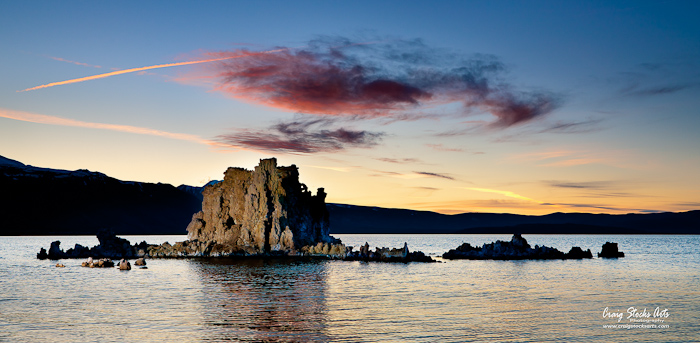
The photo is from Mono Lake, which is in just outside of Lee Vining in Eastern California, at the East Entrance to Yosemite National Park. The lake is famous for the exposed calcite structures called tuffas that have been exposed as the lake level has dropped over the years. Our route from the San Francisco Bay Area back to Illinois included a stop in Lee Vining, and an evening visit to the lake. It was a beautiful day, but not much in the way of clouds. There were also quite a few people there, so you had to work with and around other people.
Also, as you can see from the waves on the water in the picture below, there was quite a bit of wind. Wind works against you in a couple of ways. The most obvious is that it blows the camera around on the tripod, so a good, sturdy tripod is important. It also creates waves in the water, which destroys reflections. If you really want the appearance of smooth water, you can get it with a long shutter speed, which blurs the waves in a smooth surface, and brings back some of the reflections. But you can't get a long shutter speed (1/2 second or longer) when the sun is still shining unless you have a good neutral density filter to cut the light. I don't have one, so my only choice was to wait.
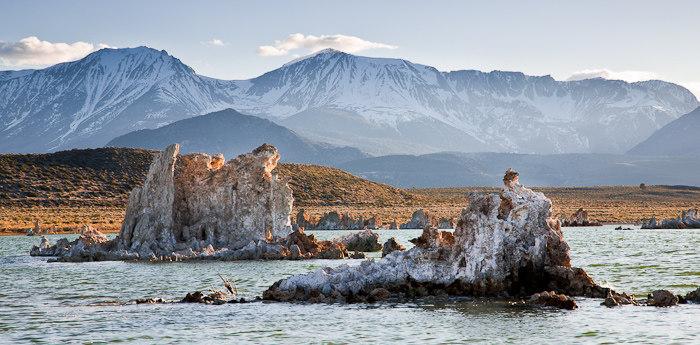
The filter I did have with me was my trusty, two-stop, soft edge, graduated neutral density filter. It's kind of like putting sunglasses on the top half of the frame, and it really helps to even out the bright sky with the foreground. In fact, it was on my lens for every photo shown here.
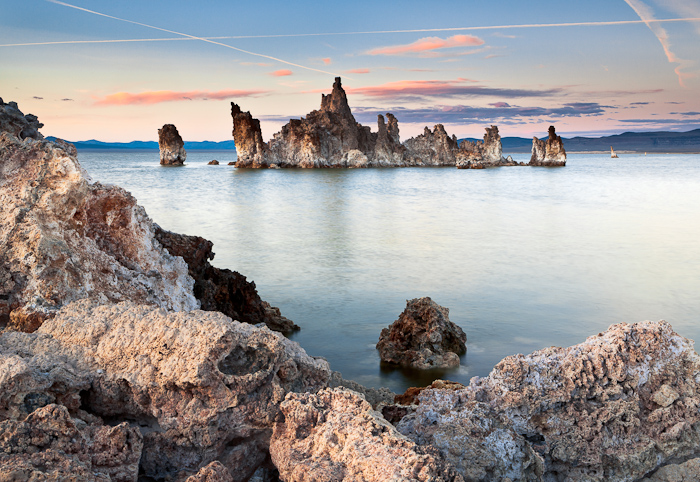
As the sun settled behind the mountains, the light levels dropped enough to be able to use longer shutter speeds. The photo above was at 1.5 seconds, so the waves are starting to really blur beyond recognition. While I like the photo above, in the back of my mind, I know it's not unique. There were at least three other photographers next to me shooting the same scene. And, during the evening, several others came and went from the same location. I don't want to sound like a snob, but I do like to produce something that's a little different from what everyone else has.
Then, as I started back toward the parking lot, I saw the scene that would become my favorite image. There was a single cloud floating above a a large tufa, and it was picking up just enough of the last light to have a pink, cotton candy glow. And, with a shutter speed of 1/2 second at f/22, I was able to get a fair amount of smoothing in the water. The problem was that the tufa is rendered mostly as a black blob. In fact, it tends stop blend into the mountains in the background, so it looses its importance as an element in the photo.
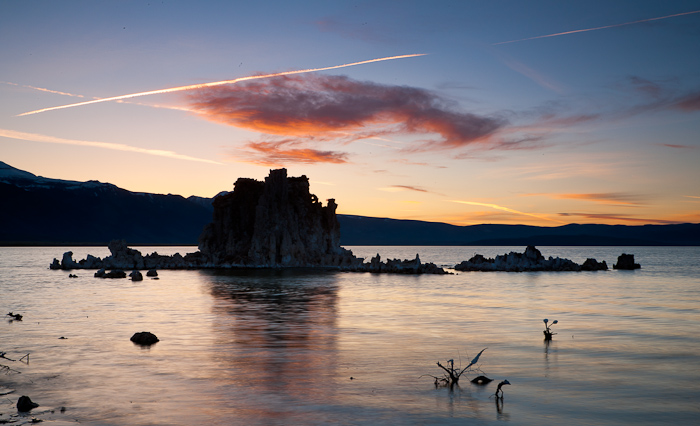
The solution was to place a strobe about 100 feet away to camera left. Since the shoreline curved, the strobe was actually closer to the tufa than the camera. I didn't have a light stand, so I simply laid the strobe on a rock, and used a Pocket Wizard Plus II to trigger the strobe. My goal was to add a spotlight to highlight the tufa and separate it from the dark mass of the mountains in the background.
That solved one problem, but created a new one. When you mix flash with ambient light, you have to balance the exposures. There are three variables you control so set the exposure. The ISO settings determines how sensitive the sensor is to light, and a lower ISO value will require more light energy to make a proper exposure. The shutter speed determines how long the shutter is open to expose the sensor, so the longer the shutter is open, the more light energy is allowed to expose the sensor. The third factor is the f/stop, or aperture. This is the size of the opening of the lens, and a larger opening will let more light through to the sensor.
The light from the strobe is extremely short duration, typically much shorter than the shutter speed. The result is that the ISO and aperture are the only factors that affect the flash exposure. In practice, you choose an ISO and f/stop for the desired flash exposure level, and then adjust the shutter speed for the amount of ambient exposure.
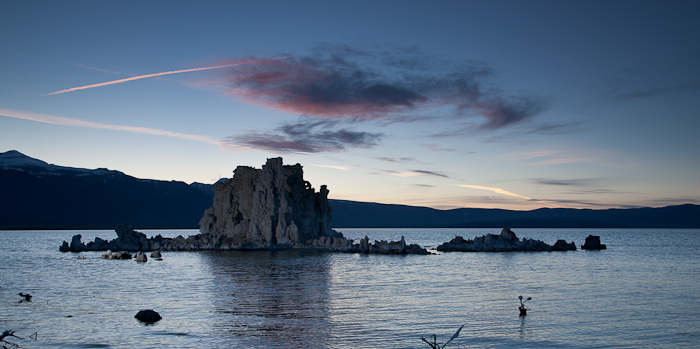
The led to the image above. In order to get sufficient flash exposure, I had to open up the lens from f/22 to f/5.6, so the larger lens opening was letting 5 stops more light through to the sensor, and each stop corresponds to twice the amount of light. That meant that the shutter speed would have to be much shorter duration, so I had to use 1/30 of a second instead of 1/2 second, also about 5 stops difference. So, the tradeoff is that I've lost the ability to have a smoother surface on the water in exchange for a brighter tufa.
Now, let's talk a little about post processing. You've surely noticed that the raw capture above looks different from the finished image. The biggest change by far was to adjust the white balance. That's not Photoshop trickery, the white balance is adjusted for every color photo. Some people set their camera to make the adjustment, while others set their camera to simply capture the raw data, which allows them to set the the white balance later at the computer. I my case, I always shoot raw and set the white balance during post processing at the computer.
Finding the best white balance setting is as much art as it is science. Digital cameras (like their film predecessors) render the colors in a scene within a very narrow range. Our eyes and brains, however, view colors in the context of the color of the light. A white piece of paper looks the same to our eyes, regardless of whether we're outdoors in the sun, or inside using incandescent bulbs. But the light is actually quite a bit different color. That's why when you take a picture inside at night, everything tends to look orange in the picture. That's actually the color of the light, it's just not the way you see it.
When it comes to sunsets, there can be huge differences. In this case, the actual color of the light is rather blue, since most of the scene is iluminated by the blue glow in the sky. But my eye's saw the bright yellow and orange glow in the cloud and along the horizon. By simply adjusting the white balance to a more yellow setting, the pale pink in the sky becomes red and yellow, and the deep blues become light blue and cyan. All of a sudden, the picture looks more like what I saw.

The final changes were to boost the saturation and contrast a little, and to brighen the tuffa a little. I also removed the branches that were sticking out of the water in the foreground.